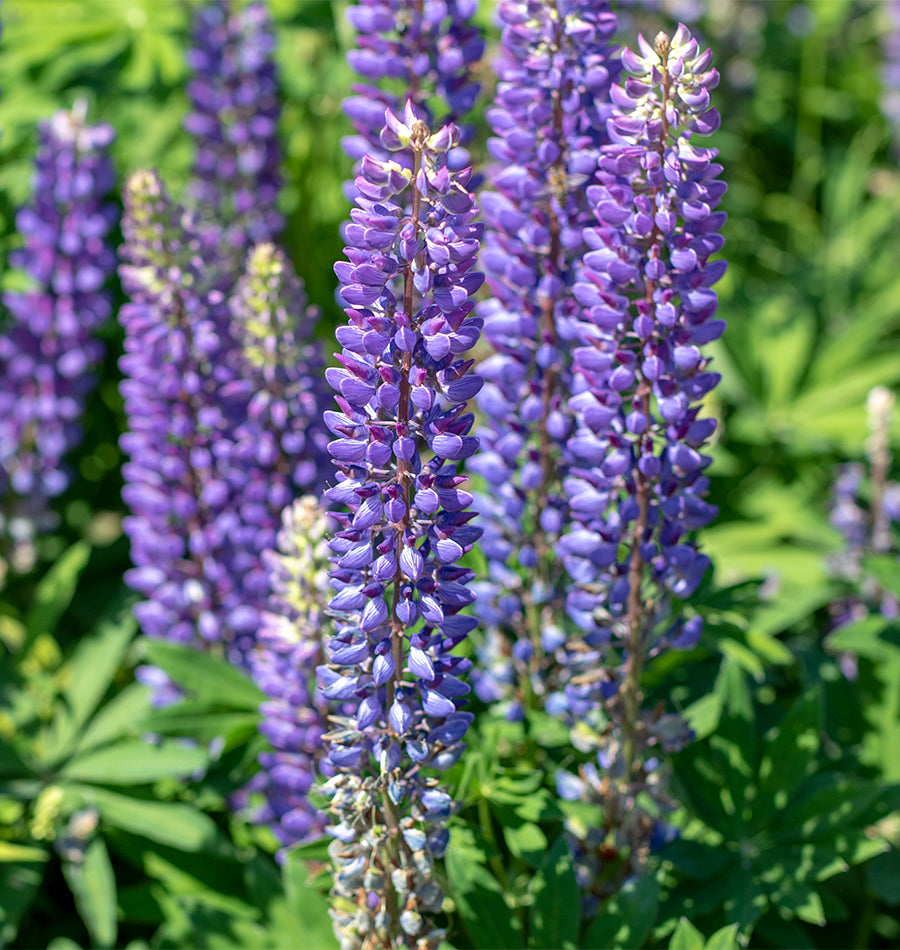Through April and May we enjoyed a very robust display of lupins planted around our farmhouse and over the septic berm. The blue and purple flowers were visible from the nearby overpass and painted a streak of colour across the property. These perennial flowers begin to bloom just after the last frost date, and usually finish just before the end of spring. Lupin flowers are rich in nectar, so they’re great for feeding domestic and wild bees. Like other members of the family Fabaceae, they fix atmospheric nitrogen in the soil that will feed other plants, including food crops.
Some lupins even produce edible seeds known as lupin-beans. The species most often grown for ornamental garden use is Lupinus polyphyllus, which does not produce edible seeds. This species is rich in alkaloids that make it unpalatable, even toxic, if eaten. The flowers open from the bottom of the stalk towards the top, and are followed by pods of dark, very hard seeds.

Around the first week in June, we began to notice small numbers of aphids on the plants. Of the approximately 5,000 species of aphids in the world, fewer than 10% are pests of crops and domestic plants. Most have very specific relationships with particular types of plants. The Chinese Sumac Aphid is only found on Chinese sumac, for instance. The last major study found 412 named species of aphids in British Columbia. Of that number, only a few will feed on lupins, but Lupin Aphids (Macrosiphum albifrons) are real specialists. As they suck fluids from the lupins’ tissues, they absorb the alkaloids, which makes them unpalatable (possibly toxic) to the insects that would normally act as control species. There are four species of parasitoid wasps that do prey on these aphids, but not in sufficient numbers to control this kind of population. Ladybird beetles, for instance, do not eat Lupin Aphids.
Aphids have a very complex system of reproduction, that seems to be flexible according to the availability of food, and impacted by weather. Throughout the spring and summer, they reproduce asexually, with babies emerging from eggs within the mother, and then essentially live-born onto the host plant. The mother may produce winged or wingless females or males. Aphids don’t reproduce sexually until the fall, when they mix up the gene pool and lay eggs for overwintering.
When conditions are right, they can produce three to four generations in a single summer, so the populations can increase with unbelievable speed. That’s what happened to our lupins!

By the tenth of June, the flower stems of the lupins were no longer visible beneath the dense layer of aphids. All the plants were at least partially affected, with the majority being highly infested. Every day the population increased.

The lower leaves of the plants became shiny with honeydew – the sugar-rich byproduct aphids produce as waste. The honeydew became a host to mildew, which quickly spread from plant to plant.
Our first thought was to try to deadhead the infected plants and remove as many of the aphids from the farm as possible. If predatory insects were not going to help, physical removal seemed a good choice.

But being so tied to lupins, the aphids were not spreading to other plants. Lupins planted elsewhere on the property were not even becoming infested. Often when insect populations reach infestation levels, the best thing to do is nothing at all. Their population becomes so dense, so quickly, that they become highly prone to disease. In the case of aphids, the fungus Entomophthora might be the best hope of wiping out a colony. This fungus shows up in wet weather of late spring, so to encourage its growth we have taken to misting the aphids with water in the late afternoon, which will provide a better environment for the fungus.

As alarming as they may appear, we’re more interested in their ecology and to see how nature takes its course. Often nature’s own solution is the most instructive.
There are, of course, some other control options for aphids.



